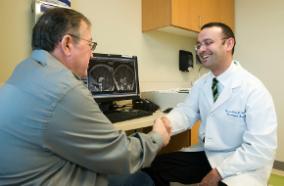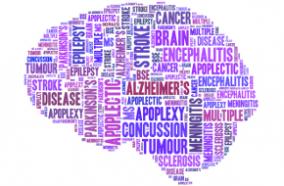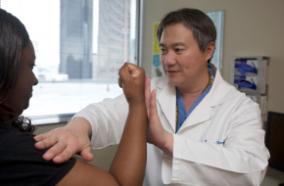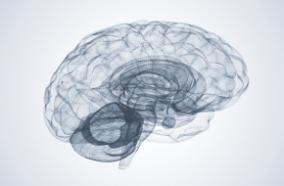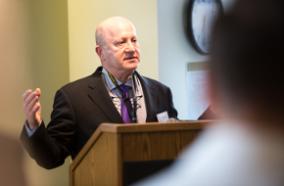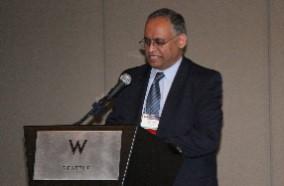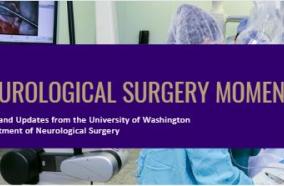3 weeks 4 days ago
CONCLUSIONS: In patients undergoing resection of growth hormone-secreting tumor for treatment of acromegaly, microscopic invasion of tissues is relatively common and portends an increased risk of failure of surgical biochemical remission. Identification of microscopic invasion may allow for more aggressive surgical management and better chances of surgical control of disease.
Jessica C Eaton
4 weeks ago
CONCLUSIONS: In adults presenting to Level I trauma centers for acute mTBI, symptom burden (RPQ total score) is robustly associated with 3-month symptom outcome. The RPQ, which can be completed in about 3 min, may support recognition of mTBI symptoms in the ED and risk stratification for triage into appropriate follow-up pathways.
Samuel Gray
4 weeks ago
CONCLUSIONS: Results indicate role strain experienced by OB nursing students, regardless of gender identification, continues to be a significant factor in the current clinical environment. Educators can utilize this awareness of increasing role strain in the context of sociocultural influence among students in the OB clinical setting to improve the student experience.
Amy S D Lee
4 weeks ago
CONCLUSIONS: Our multisite study showed that neuroradiologists performed better than AI for IA detection in terms of sensitivity and accuracy, while while achieving comparable specificity.
Babatunde J Akinpelu
4 weeks ago
CONCLUSIONS: While surgical care provided favorable short-term functional outcomes, long-term survival for children with pLGGs in Kenya remains substantially low. These findings call for urgent development of robust pediatric neuro-oncology multidisciplinary care and structured long-term follow-up pathways.
Philip Maseghe Mwachaka
4 weeks 1 day ago
CONCLUSION: These simple, practical, cost-effective tools have utility for estimating preoperative fitness to rule out low fitness. These tools could be utilised by perioperative clinicians for identifying patients who may not require preoperative cardiopulmonary exercise testing, thereby optimising resource allocation.
Brendon H Roxburgh
4 weeks 1 day ago
No abstract
Andrew H Ko
4 weeks 1 day ago
CONCLUSIONS: Primary care clinics that implement office-based addiction treatment by nurses increase patient-years of opioid use disorder (OUD) treatment in male but not female patients. Exploratory findings suggest that differences in the proportion of patients treated for OUD, rather than differences in the duration of OUD treatment, account for observed differences across groups.
Katharine A Bradley
1 month ago
Somatosensory perception largely emerges from diverse peripheral sensory neurons whose cell bodies reside in dorsal root ganglia (DRG). Damage or dysfunction of DRG neurons is a major cause of chronic pain and sensory loss. In mice, deep single-cell transcriptomic profiling and genetically defined models have offered important clues into DRG function, but in humans, the cellular and molecular landscape of DRG neurons remains less understood. Here, we constructed a reference cell atlas of the...
Shamsuddin A Bhuiyan
1 month ago
The ribosome is the highly conserved molecular machine that decodes mRNAs during protein synthesis. While traditionally thought to consist of a uniform set of proteins, here we discover that ribosome composition is reprogrammed to adapt to intrinsic and external cellular perturbations. During infection by non-segmented negative-sense viruses, viral entry into cells recruits the large ribosomal subunit protein rpL40 to a noncanonical site on the small subunit of 80S ribosomes near the mRNA entry...
Hsin-Yu Tsai
1 month ago
Glioblastoma (GBM) quiescent (Q) cell populations are hypothesized to contain cancer stem-like cells (CSC) that drive tumor growth, cellular heterogeneity, and recurrence. However, GBM tumors do not neatly resolve into developmental hierarchies and Q stem-like activities are difficult to assess. Here, we evaluated tumor Q subpopulations in patient-derived GBM xenograft tumors using live cell reporters, DNA label retention assays, and single cell genomics. Compared to adult neural stems cells...
Anca B Mihalas
1 month ago
Cognitive decline with aging, and some neurodegenerative conditions like Alzheimer's disease, disproportionately affects females yet few mechanisms beyond steroid hormone signaling fully explain this sex-specific vulnerability. The chromatin-remodeling DEK protein, upregulated by estrogen and progesterone and broadly expressed in the brain, including the hippocampus, may be one such mechanism. We have previously linked DEK loss with indices of neuronal dysfunction, including increased DNA...
Kaitlyn Gardner
1 month ago
Alzheimer's disease (AD) is the most common cause of dementia, with global case numbers projected to reach 153 million in 2050 ¹ . AD is highly heritable, with twin-based heritability estimates of 60-80% ² . While 1,200 causal loci are predicted to exist for AD ³ , approximately 80 have been associated with AD in two recent studies ^(4,5) , suggesting that many loci remain to be discovered ⁶ . Here, we analyzed data from 183,620 AD cases and 2.6 million controls from diverse ancestries,...
Emil Uffelmann
1 month ago
Pediatric Inflammatory Bowel Disease (IBD) remains challenging to treat and difficult to prognosticate. Although multiple immune cell types coordinate pathology in both Crohn's disease (CD) and ulcerative colitis (UC), specifying which cell types and cell states portend better or worse response to major IBD treatment strategies, including anti-TNF therapies (the only FDA-approved therapy for pediatric IBD), remains challenging. Here, we present the results of the PREDICT study, which enrolled 79...
Leonard Nettey
1 month ago
After a traumatic brain injury, around 12% of patients require surgical interventions during their index hospitalization due to delayed or progressive intracranial hemorrhage or complications such as elevated intracranial pressure (ICP)¹. Compiling data from four harmonized studies with 288 patients that have high-frequency physiological measurements, including ICP, we aimed to determine factors associated with those surgeries and whether longitudinal physiological measurements could be used to...
Sarah Hinds
1 month ago
CONCLUSIONS: Our data place TNFR2 signaling as a potential upstream regulator of TOX expression in T cells and propose TNFR2 antagonism as a novel immunotherapeutic strategy.
Alexandra M Hoyt-Miggelbrink
1 month ago
In contrast to living organisms, viruses were long thought to lack protein synthesis machinery and instead depend on host factors to translate viral transcripts. Here, we discover that giant DNA viruses encode a distinct and functional IF4F translation initiation complex to drive protein synthesis, thereby blurring the line between cellular and acellular biology. During infection, eukaryotic IF4F on host ribosomes is replaced by an essential viral IF4F that regulates viral translation, virion...
J Maximilian Fels
1 month 1 week ago
Acute traumatic spinal cord injury (tSCI) often results in devastating neurological dysfunction for affected individuals and imposes a substantial financial burden on society worldwide. Current treatment approaches have limited ability to counteract secondary injury expansion and additional cell death. The extent of secondary damage is a result of posttraumatic tissue swelling, edema, vascular damage, and hematoma and these factors contribute to pathological intraspinal pressure (ISP) elevations...
Tobias Prasse
1 month 1 week ago
No abstract
Michael Williams
1 month 1 week ago
No abstract
Varadaraya S Shenoy
"university of washington"[affiliation] and neurological surge...: Latest results from PubMed
More posts about UW Neurological Surgery Recent PubMed Publications

